Some of the links in this post may be affiliate links.
Want to learn how to propagate String of Hearts? Here are 6 different ways that you can propagate this tough and versatile houseplant and make new plants! In addition, I also mention some tips on how to make String of Hearts fuller.
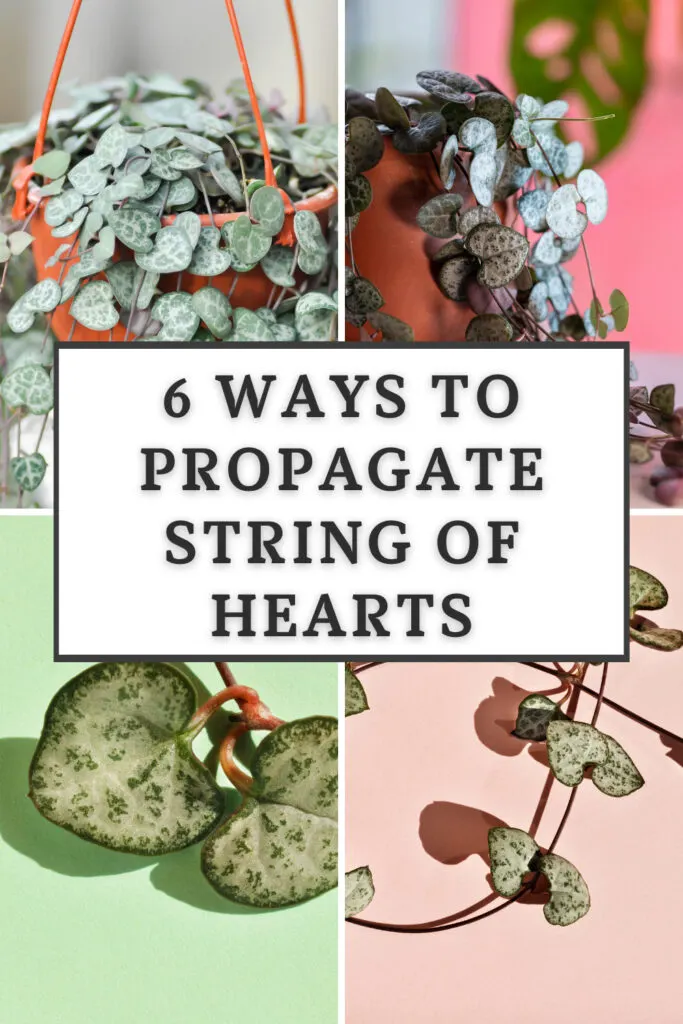
The botanical name for this plant is Ceropegia woodii, but some common names include Chain of Hearts, Rosary Vine and Hearts Entangled.
Regardless, here are 6 ways that you can make a fuller plant and root some more for yourself or for a friend!
Table of Contents
6 Ways to Propagate String of Hearts
Who can resist the heart-shaped leaves of String of Hearts vine? Here are 6 different methods to propagate this beautiful plant. The best time to propagate is during the growing season, roughly Spring through late summer, when plants are actively growing.
Table of Contents
1. WATER PROPAGATION
Rooting chain of hearts in water is super easy. Simply take several cuttings that are a few inches long and place them in water. Remember that the mother plant will grow back!
Remove the leaves on the part of each cuttings that will be under water in your glass or vase. This will help to prevent rotting of those leaves and keep the water fresher.
For the part of each cutting that is not underwater, make sure you have a few leaves.
The roots will grow from the nodes, which are the locations where the leaf meets the stem. You should have at least one node, if not two, under water.
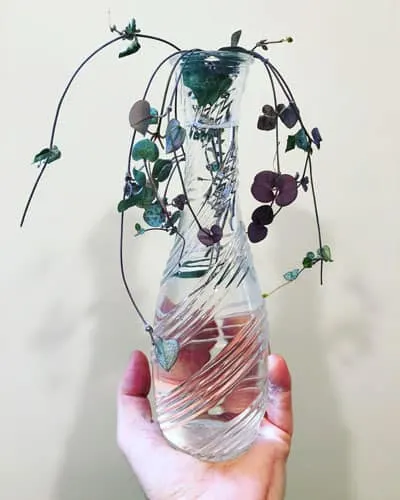
The more stem cuttings that you can take, the better! This will result in a fuller plant from the very beginning.
I had received the cuttings above in the mail from a friend, so I started with those.
Be sure to change the water at least once a week or so. If you notice the water getting murky, change it more frequently.
Place your cuttings in water in a location with bright, indirect light. Depending on your conditions, you should have roots within a few weeks!
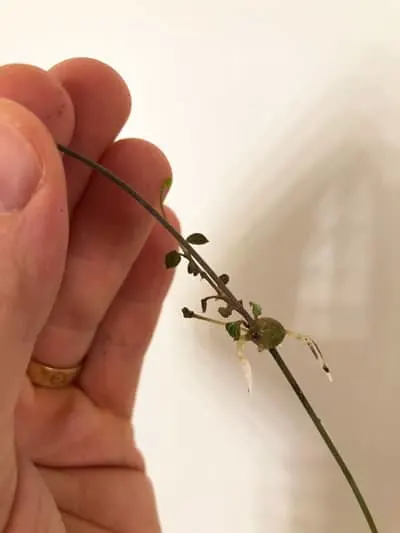
Notice the roots growing from this cutting on the small tuber on the cutting. We will get to talking about tubers later.
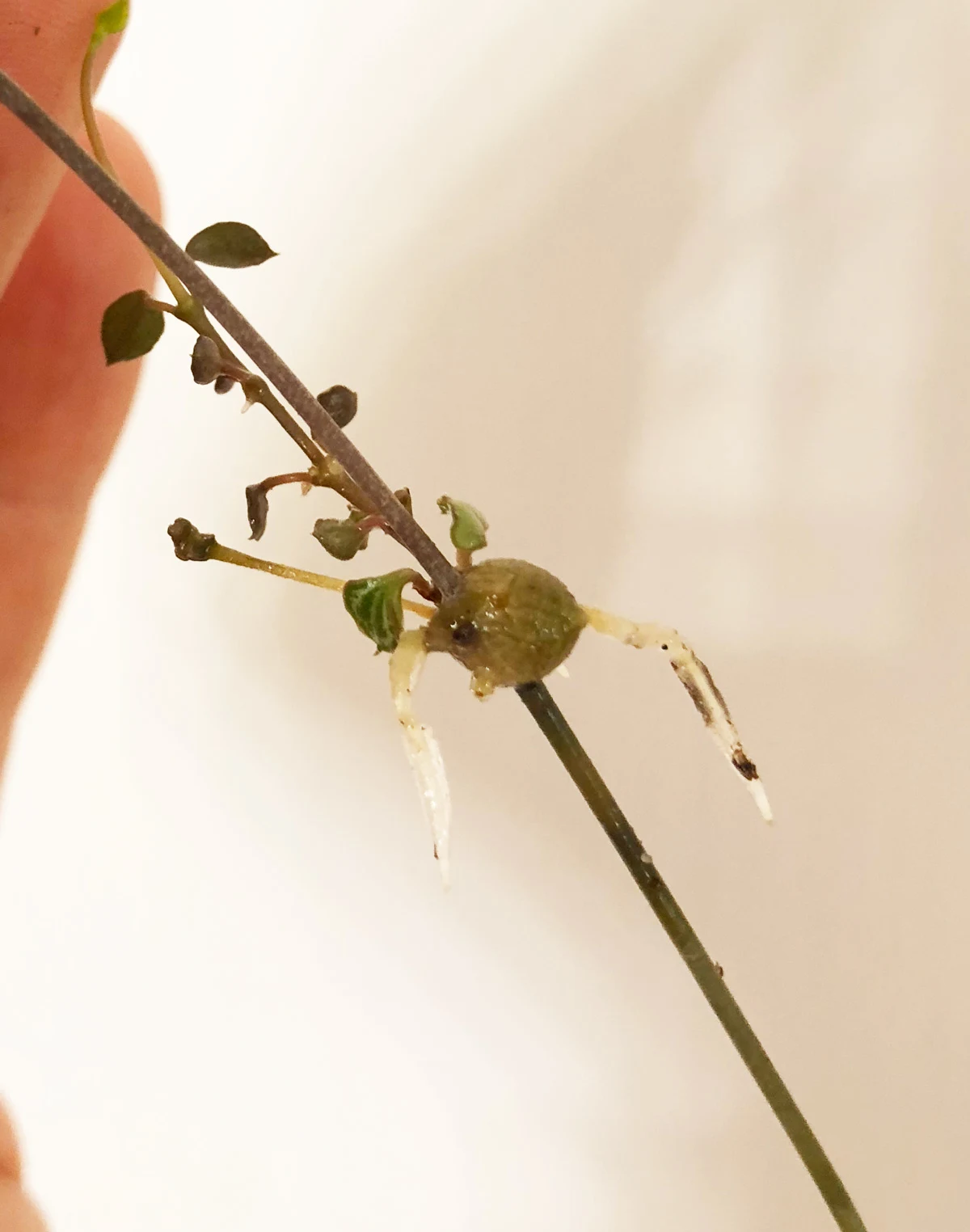
After your water propagated cuttings have roots, go ahead and plant them in soil. You don’t need to wait for them to get too long. 1/2″ long is plenty.
I wrote a whole other post on the care of Ceropegia woodii, so be sure to check it out and find out what soil blend I like to use for these plants, among many other care tips!
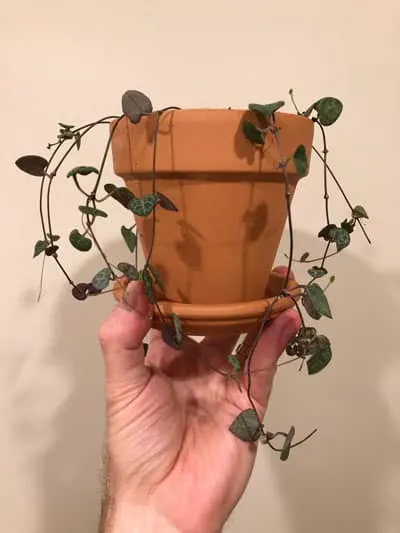
If you absolutely love propagating in water, don’t miss my guide on the best houseplants to propagate in water.
2. PROPAGATION IN SOIL
Propagation in soil would follow the same process as above, except you would stick the cuttings directly into soil just like in the above photo. Make sure that the pot has drainage holes in order to minimize the risk of root rot.
To increase the chances of getting your cuttings to root, you can dip each node that will go under the soil line into rooting hormone which you can easily purchase on Amazon.
Use the soil blend that I describe in the string of hearts care post, and then just wait!
Or you can buy the String of Things Soil Blend from Oh Happy Plants. They make AMAZING mixes, and you will get 10% off at checkout automatically on any product when you use my links.
Give the pot a good watering, and from that point forward, try and keep the soil barely damp to encourage rooting. For more ideas, check out my post on best soil to propagate and grow string of hearts.
3. LAYING CUTTINGS ON SOIL
This is another soil method where you can take cuttings and lay them horizontally on top of soil. Make sure that there is direct contact with the soil.
You can even use bent paperclips to gently pin the cuttings down so that they have contact with the soil.
For this method, it is helpful to increase humidity to encourage the cuttings to grow roots, otherwise the cuttings may dry up.
You can place the container or pot into a clear plastic bag and seal it up. Be sure to open the bag every few days to air it out so that mold doesn’t form.
Roots will start to grow from each node.
4. CIRCLE STRANDS BACK INTO SAME POT
One method that I’m trying now is using the plant that I grew from the water propagated cuttings.
Take a look at the resulting plant after a few months. It was only a few cuttings so the plant wasn’t very full.
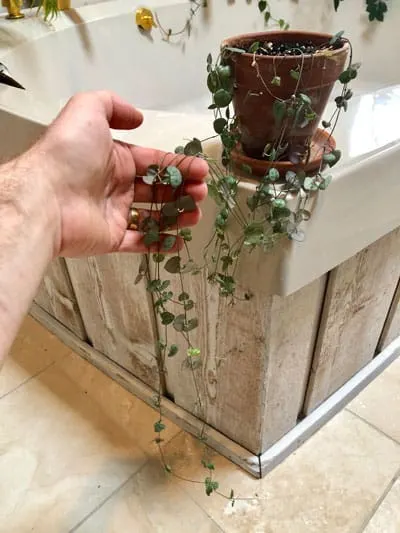
I left the plant in its pot, took the dangling vines, circled them around on top of the soil surface, and pinned them down gently with paper clips.
Terra cotta pots have pros and cons. The small ones like in the photo above will dry out super quickly, so beware!
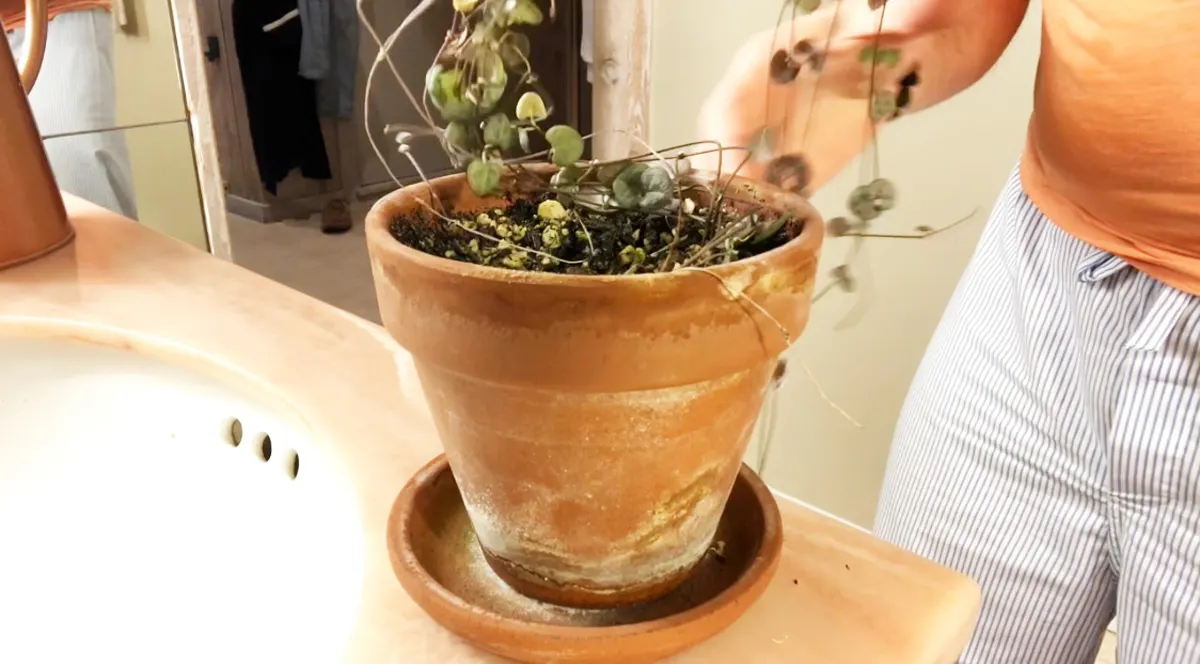
You can see how I did this in the short video that pops up in this post.
The paper clips are so the vines have contact with the soil.
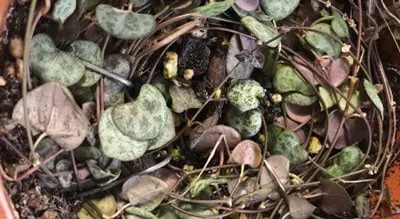
Keep the soil barely moist to encourage rooting. For best results, keep the plant humid while it is rooting. You can place it in a closed, clear plastic bag.
Place it out of direct sun while it is in the bag so it doesn’t cook! Keep it bright, indirect light and open the bag every few days to let excess moisture escape so mold doesn’t form.
Once the plant is rooted and starting to grow, you can place the pot in its final growing location. A window with a few hours of direct sun will benefit this plant greatly.
5. TUBER PROPAGATION
Depending on how old your plant is, you will see tubers of various sizes all along your string of hearts vines.
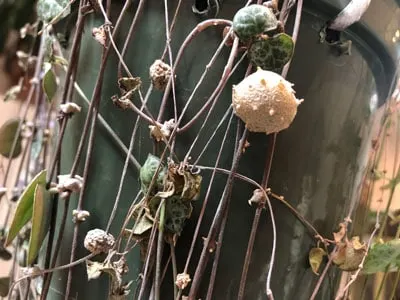
Look at the various sizes of tubers in the photo above. Without cutting off the vines, you can lay the vines with the tubers on top of a pot of soil that you can set next to your plant. Partially bury the tuber.
Roots will form from the tuber, and once it is rooted, you can cut it off from the original plant.
Finally, if you have an old plant that has lost a lot of leaves and is bare at the base, you can spruce it up.
Cut off all the vines and you can use those to propagate using one of the methods described above.
Then, you can take all the tubers in the pot and repot them into fresh potting mix. At this point, you can separate the tubers out to plant in multiple pots, or take the root system out of the pot, break up the root ball a bit, and replant into fresh soil.
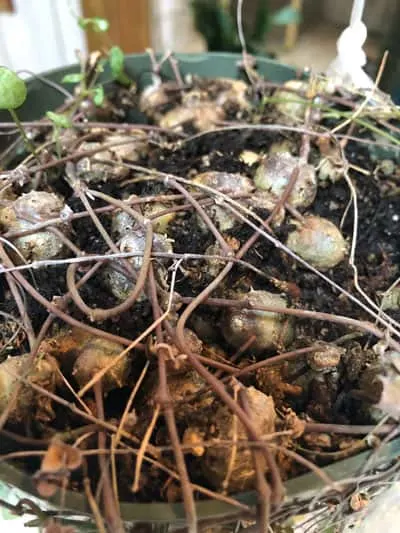
Place the pot in a nice bright window and soon you will have a flush of new growth and a brand new String of Hearts plant!
Check out my blog post on string of hearts balls for more information.
6. BUTTERFLY METHOD
If you’ve heard about the “butterfly method” of propagating, be sure not to miss my blog post on how to propagate using the butterfly method. My step-by-step guide shows you the most efficient method to propagate!
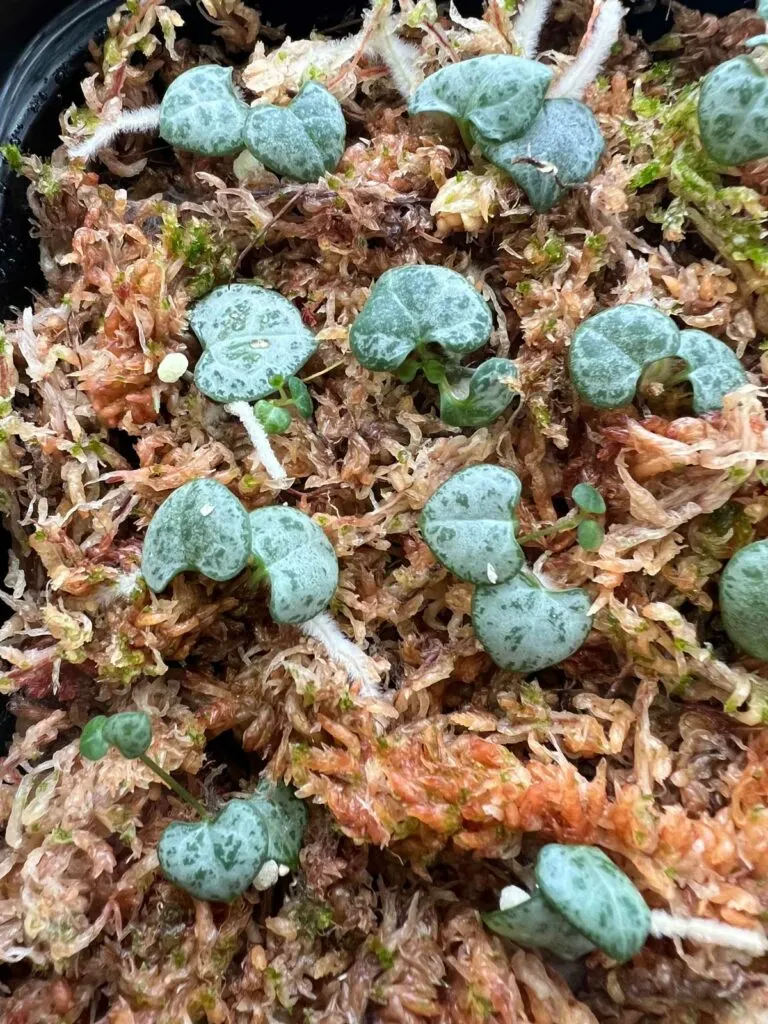
This method is the best way to make the most of your plant material because you’re taking individual leaf nodes and making more plants than you would by just using longer stem cuttings.
In addition, if you use clear plastic carry out containers with clear lids, the lid will help to maintain high humidity and you should get rooting rather quickly in a matter of a couple weeks!
If you have a string of hearts that is bare and need some help in becoming full again, check out my post on How to Make String of Hearts Fuller.
Have you tried propagating String of Hearts? Comment below with any questions!

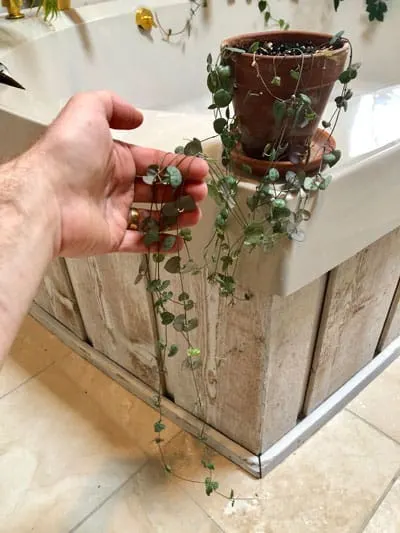
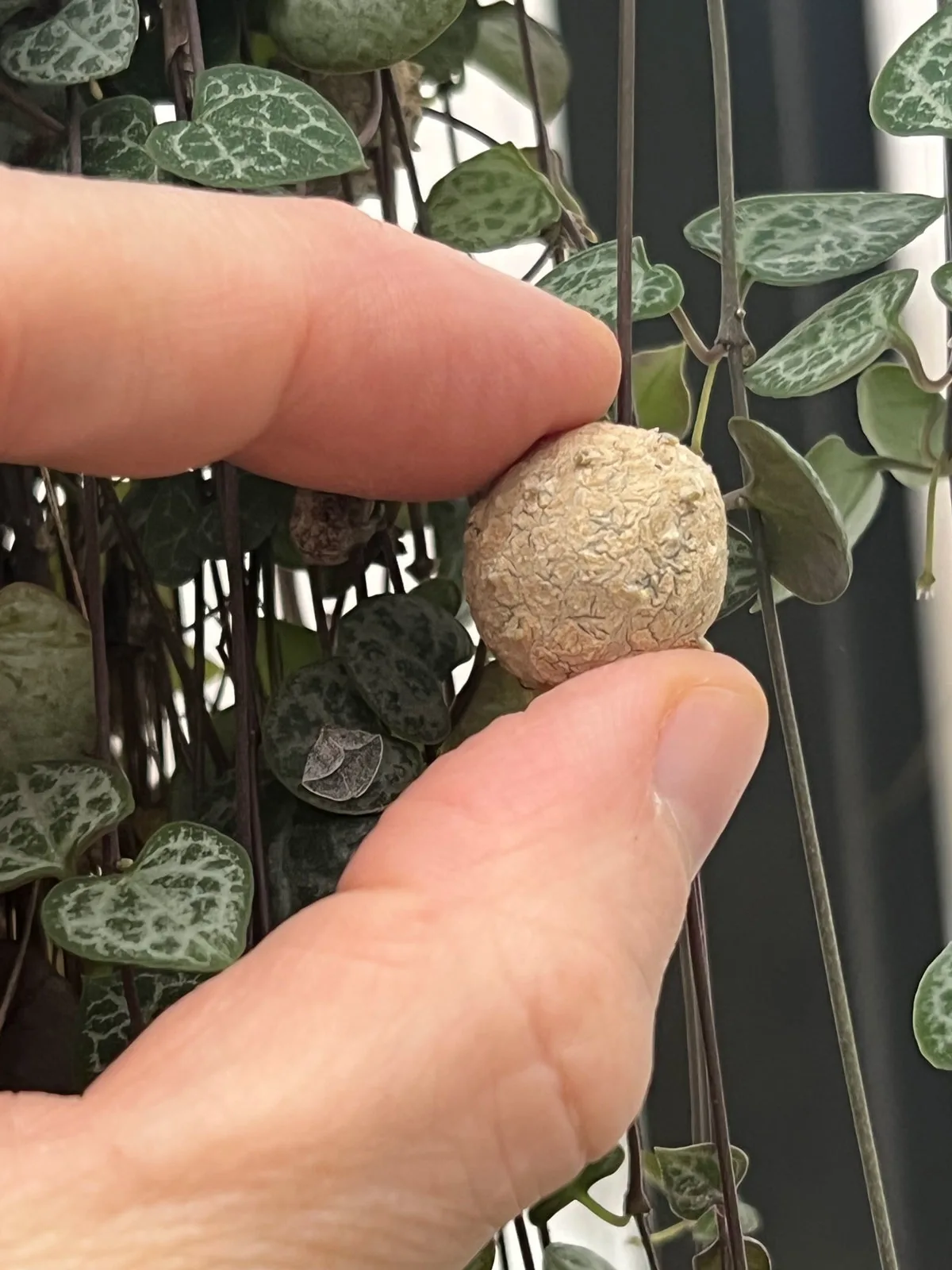
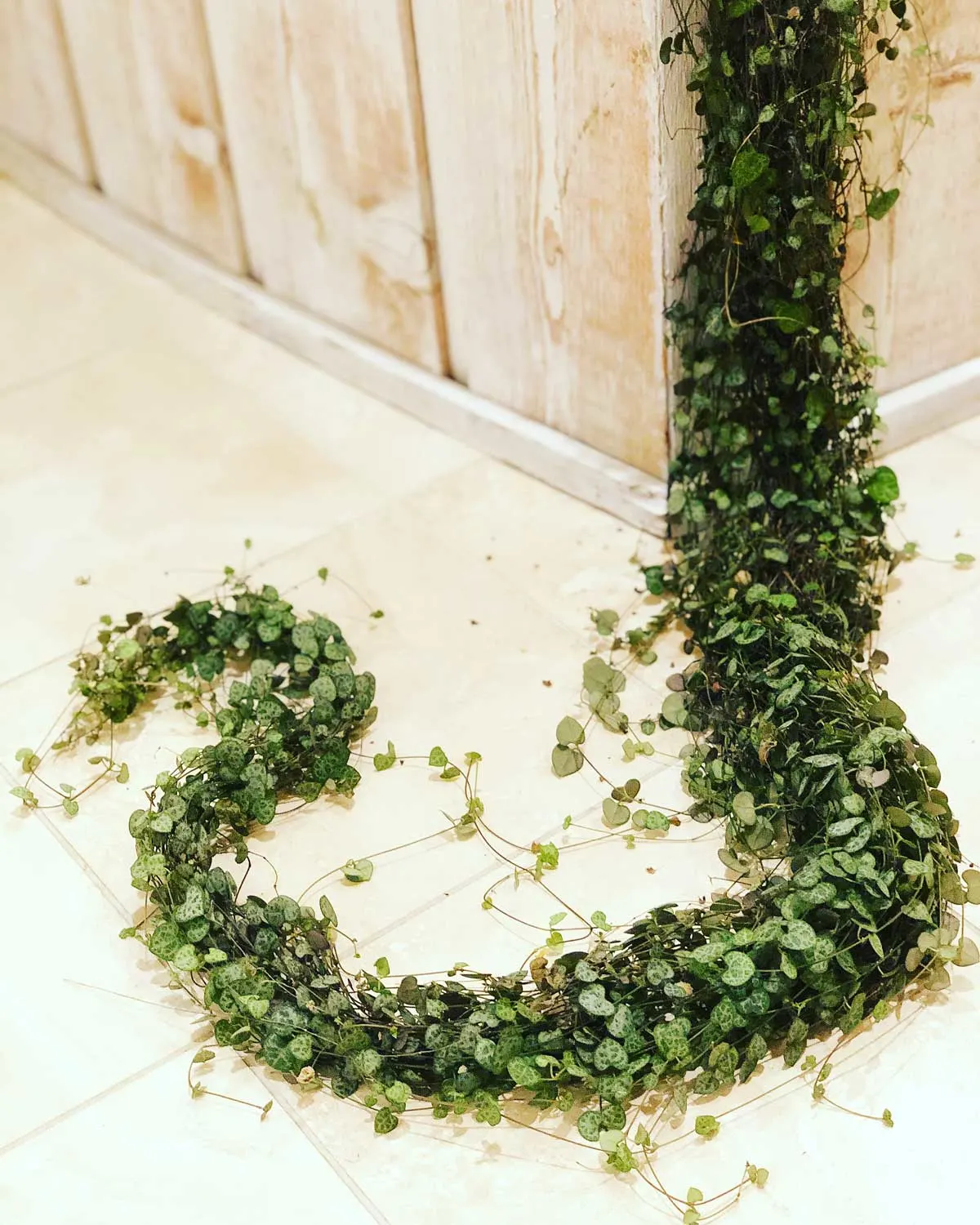
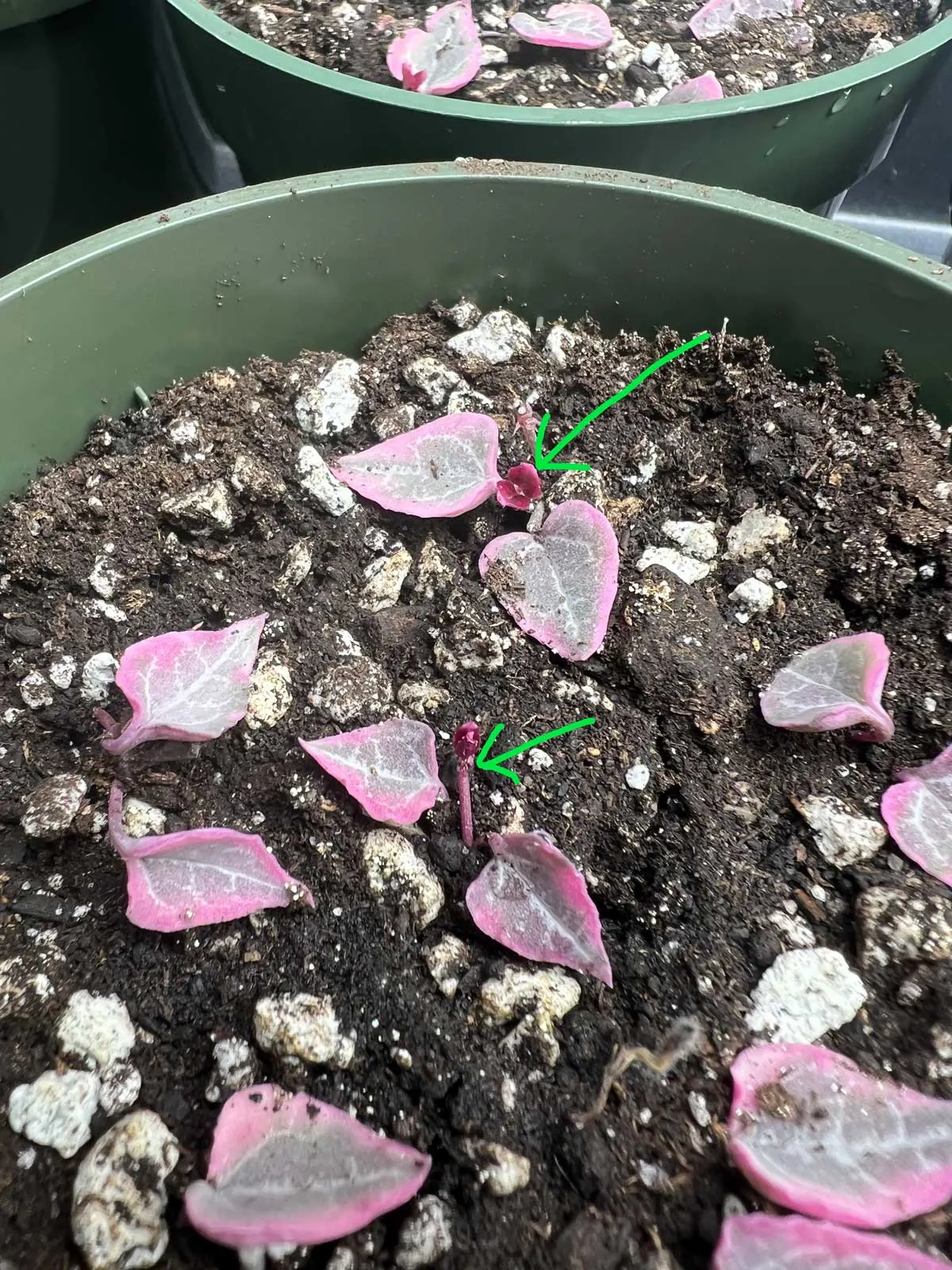
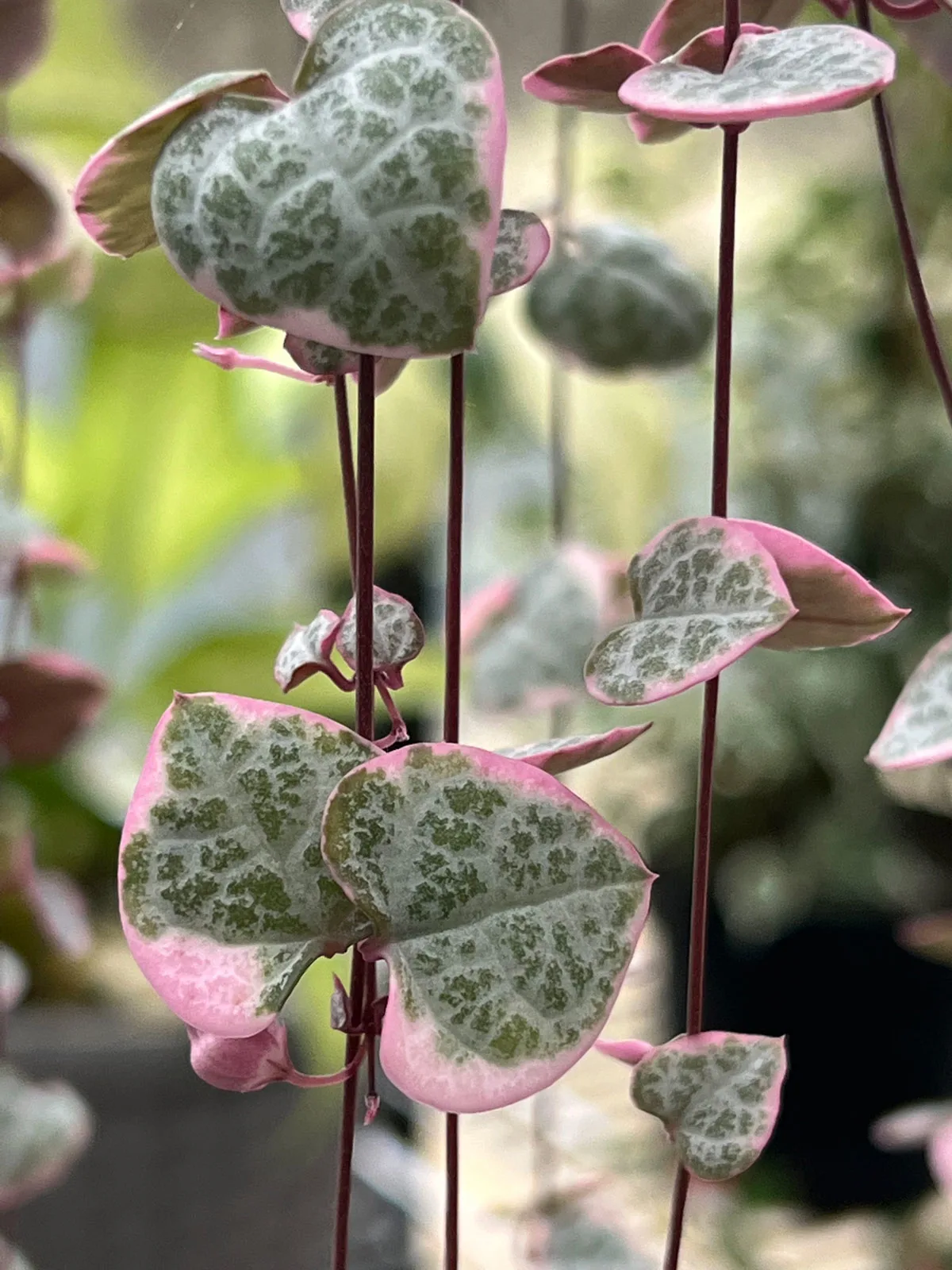
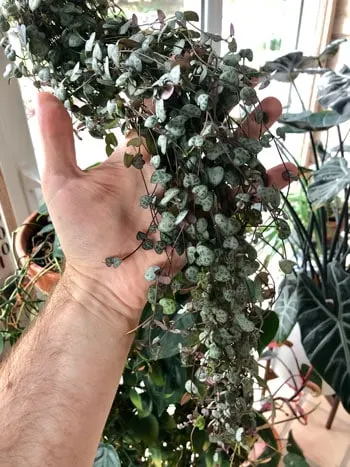
SkiddleDeDe
Tuesday 13th of February 2024
Thank you Raffael for this comprehensive coverage of the “string of …” plants. I bought a string of arrows that had long vines but it was straggly with few leaves. It had many “balls” & your’s was the first article mentioning them or even showing them. You gave me info I could not find elsewhere. I’m subscribing! 2/24
Raffaele Di Lallo
Wednesday 14th of February 2024
So happy that you found my article useful! :-)
Izzy
Monday 14th of August 2023
Hi Raffaele,
I'm looking for the answer to what I believe to be a simple question but I cannot find the answer in any of the posts or videos about propagating string of hearts, or string of anything for that matter. If I take a long string (of e.g. hearts), and cut it into multiple segments for propagation, does it matter which way up the cuttings go in the water? i.e. can any node grow roots or leaves, and which it grows just depends on which end is in the water and which is pointing towards the light?!
Really hoping you can shed some light on this for me, Thanks
Izzy
Wednesday 16th of August 2023
@Raffaele, is this the same for all plants? I recently took cuttings of my dischidia nummularia and accidentally planted one upside down. It rooted but never produced new growth.
Love your website - your Calathea posts in particular have been super helpful for me - Thank you :)
Izzy
Wednesday 16th of August 2023
@Raffaele, thank you!
Raffaele
Monday 14th of August 2023
Hi Izzy! As long as the node is in water, it won't matter. If you really want to maximize the number of vines, use the butterfly method. You'd essentially be making single node cuttings, and I wrote a separate blog post on that. In the post, I show how to start it in sphagnum moss, but you can place each one in water too...but it will be more of a pain since they're so small. Hope this helps a bit! Here is the post if you're interested: https://www.ohiotropics.com/2021/11/23/butterfly-method-propagation-soh/
Roxe
Sunday 19th of February 2023
my string of hearts made seed pods. can I plant them and get new plants ?
Raffaele
Monday 20th of February 2023
You sure can! :-)
Brigitte McIntosh
Sunday 16th of October 2022
Have found this all very informative, Hello from New Zealand. I have a varigated SOH and it grows in a small terracotta pot in my bathroom, it gets late afternoon filtered light. Until now I did not know about the tubers, and on closer inspection my plant has several including one very large one. I really dont want to chop my lovely plant - if I leave the tubers in place will they slowly make the plant detertiorate? I tryed to wiggle the large tuber off but its not budging. Trying to separate the various strands is nearly impossible. If I do go ahead and cut the strands with the tubers to remove them, will my plant continue to grow from that area?
Raffaele
Monday 17th of October 2022
Hi Brigitte! It will not make the plant deteriorate if you leave the tubers. If you trim your plant, it will grow back. If you want to propagate, you can always just take tip cuttings and root those. Hope this helps!
Susie
Monday 5th of September 2022
I’ve been too scarred to repot my string of hearts and it has been looking so straggly. After reading through you information a few times and referring to your photos whilst mid process, it gave me the confidence to tackle what a perceived to be a risky job. Thank you so much for your informative and detailed steps, I’m quite appreciative and feel rather accomplished now 😂💕
Raffaele
Monday 5th of September 2022
Hi Susie! I'm glad you gained more confidence and was able to do it! :-).